site search
online catalog
IDENTIFIED COPY OF THE US ARMY REGULATIONS OF 1861 – LT. COLONEL JAMES DUNCAN GRAHAM
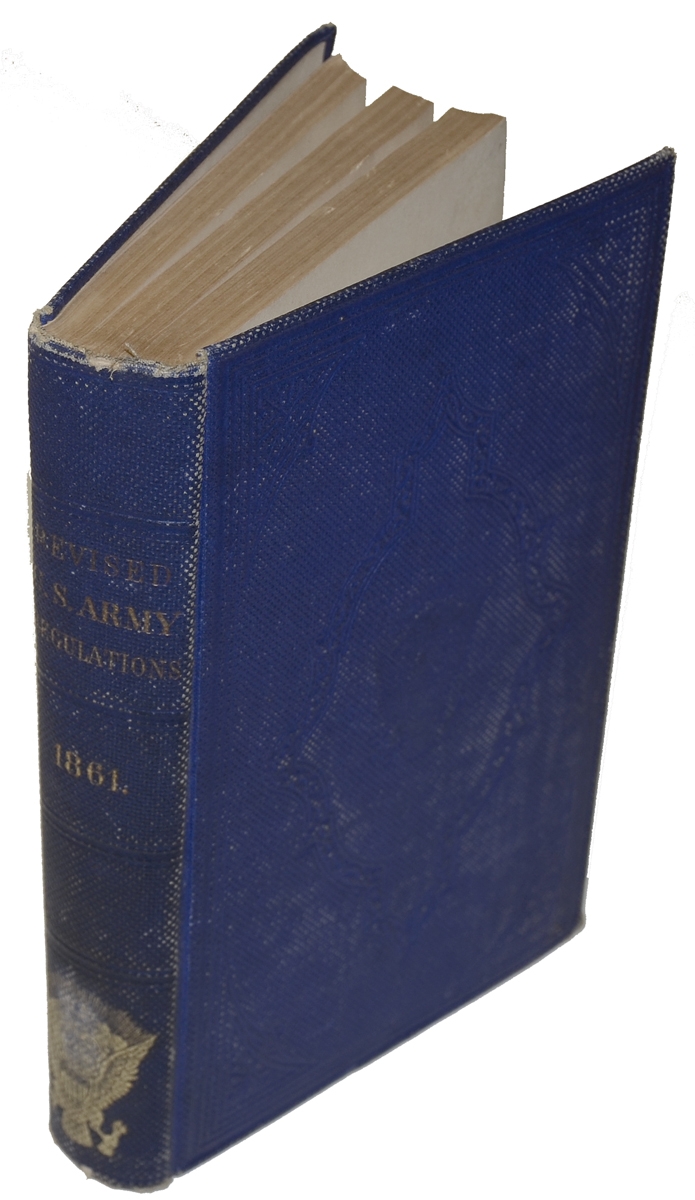
Hover to zoom

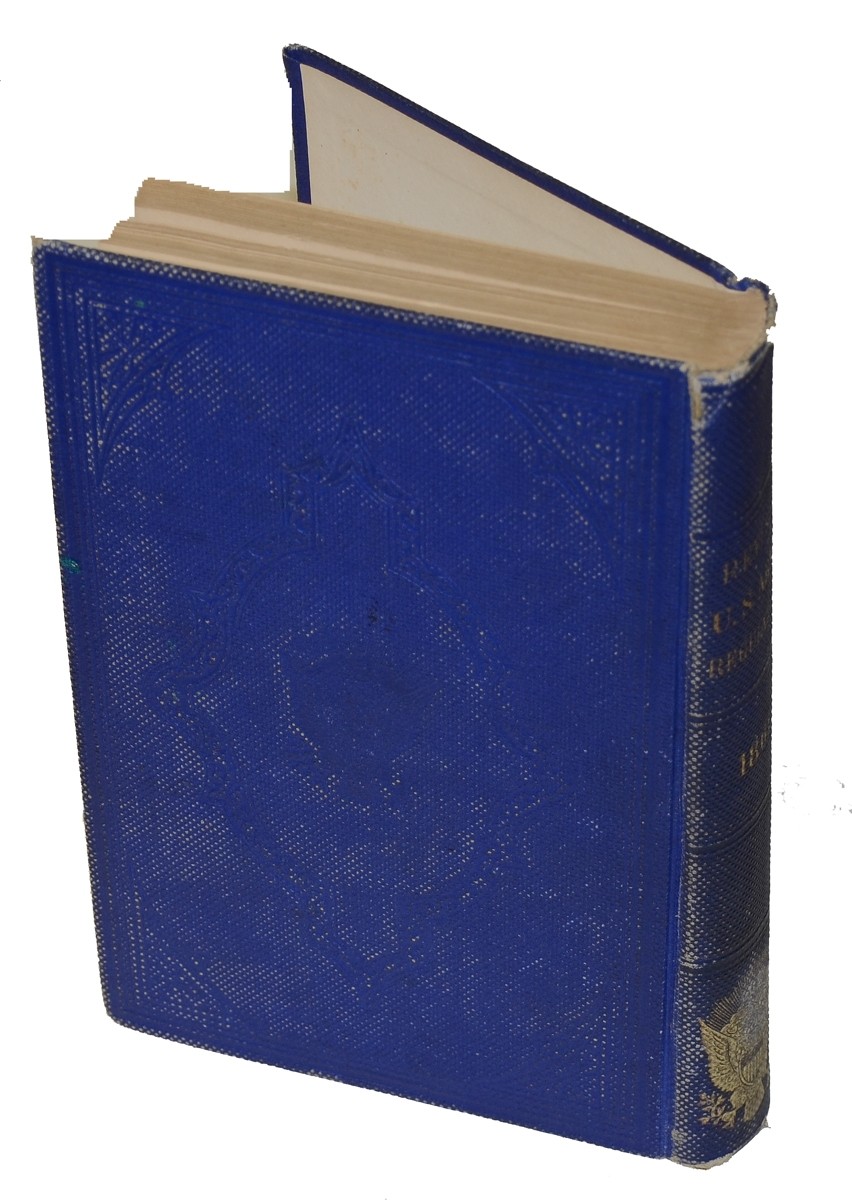
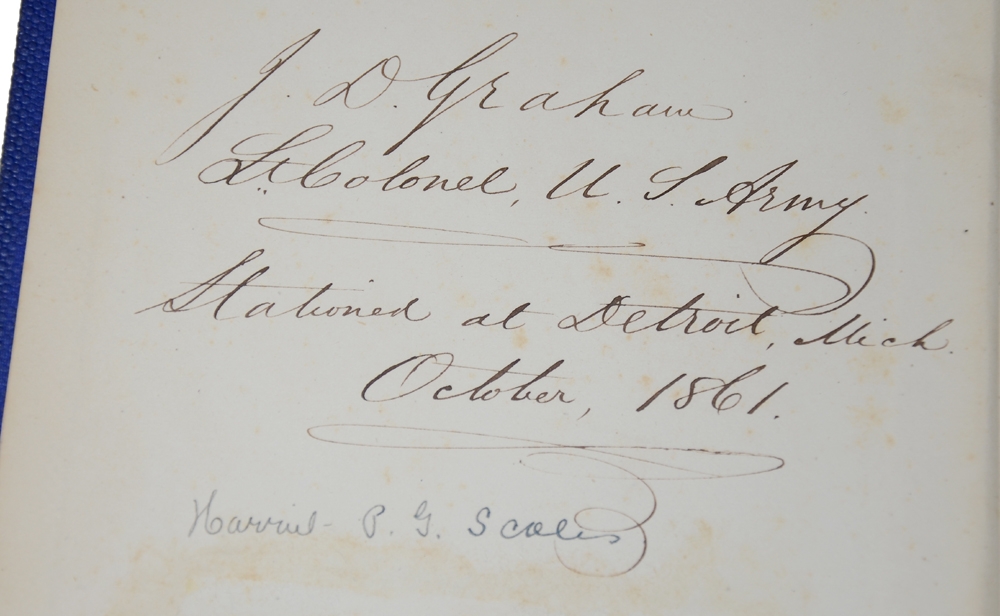
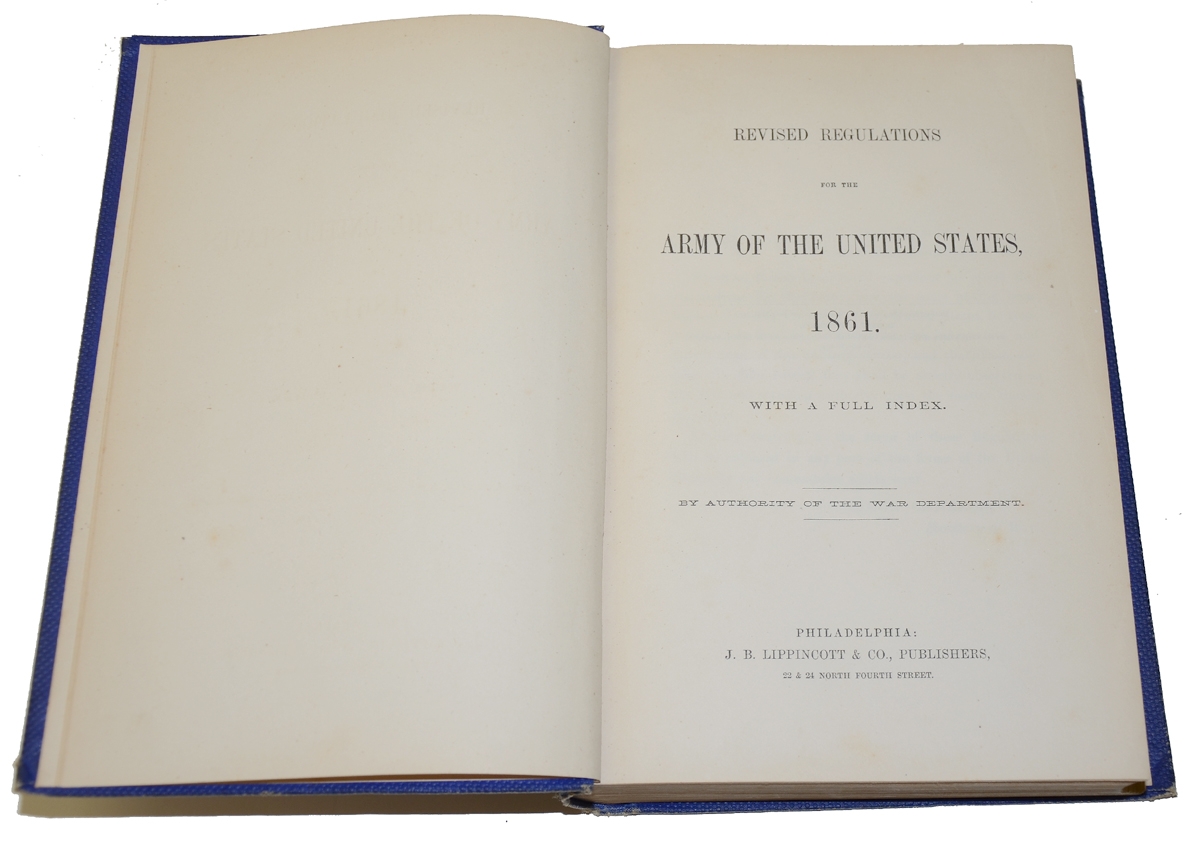
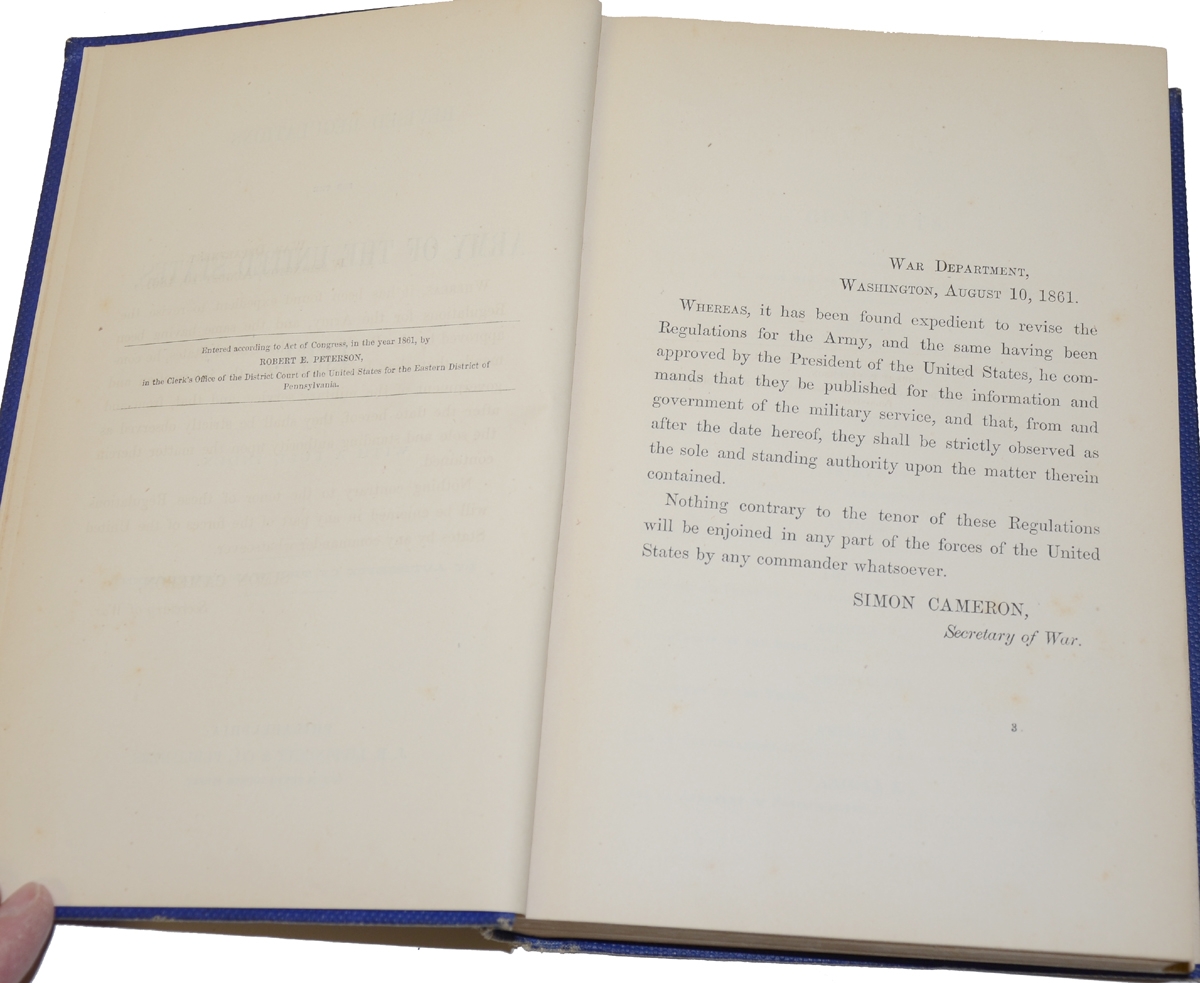
$225.00 SOLD
Quantity Available: None
Item Code: 998-602
Blue cloth bound with gilt blind-stamped spine. Very nice period ink inscription inside the front cover: J.D. Graham Lt. Colonel U.S. Army / Stationed at Detroit, Mich. October 1861. (And below that in pencil a subsequent owner: Harriet P.G. Scales.)
If you want to know how the Civil War army functioned on a daily basis, from dress parades to paperwork, the 1861 regulations are a must. Probably every officer owned a copy or shared one with brother officers. In some regiments colonels assembled inexperienced officers for school at night where they revisited their student days, but in reciting the army regulations instead of mathematics or Latin.
James Duncan Graham was born in Virginia and later in life was the brother-in-law of Union Major General George Gordon Meade.
James Duncan Graham was born on April 1, 1799 in Prince William County, Virginia. He attended the United States Military Academy from June 19, 1813, to July 17, 1817, when he graduated, and was promoted to third lieutenant in the artillery corps. He worked as an adjunct at the academy from October 12, 1817, to February 10, 1819, during which he was promoted to second lieutenant. In 1828, he married Charlotte Meade, the daughter of merchant Richard W. Meade and sister of Civil War general George Meade.
Graham was on Stephen Harriman Long's exploration of areas acquired in the Louisiana Purchase, from 1819 to 1821. He was on topographical duty from January 14, 1822, to January 15, 1829; and then on surveys in Vermont. Graham then worked on railroad surveys on the Winchester and Potomac Railroad in Virginia in 1831 and 1832, and later in Alabama, Florida, and Georgia from 1836 until 1837. During the Second Seminole War, Graham served under Major General Thomas Jesup, who commanded American troops in Florida.
Graham then was involved in reconnaissance and surveys for military defenses in Missouri during 1838. He served on a Court of Inquiry at St. Louis, in 1838–1839 and was on tour of inspection of harbor improvements on Lakes Ontario and Champlain in 1839. He was astronomer for the United States, working for the joint demarcation of the boundary between the United States and the Republic of Texas, in 1839–1840 and served as commissioner for the Survey and Exploration of the Northeast Boundary of the United States from 1840 to 1843. Graham next was head of the Scientific Corps and principal astronomer for the joint demarcation of the boundary between the United States and Canada, under the Treaty of Washington, from 1843 until 1847. That year, he was made a brevet lieutenant-colonel, for "Valuable and Highly Distinguished Services, particularly on the Boundary Line between the United States and the Provinces of Canada and New Brunswick". He worked on remaking maps of the Webster–Ashburton Treaty, that had been destroyed by fire, from 1848 to 1850, and 1852 to 1853.
Graham was on the survey of the Mason-Dixon Line, from 1849 to 1850. During 1850 and 1851, he was the principal astronomer and head of the Scientific Corps for the joint demarcation of the boundary between the United States and Mexico, under the Treaty of Guadalupe Hidalgo. He was then general supervisor of the harbor improvements on Lake Michigan, from April 20, 1854, to December 11, 1856, and of the channel improvement on the St. Clair Flats, from April 25, 1854 to September 1856. Graham was next superintending engineer of the harbor improvements on the North and Northwestern Lakes, December 11, 1856, to April 20, 1864, in which he documented the existence of a lunar tide in around 1859.
Graham served during the Civil War as superintendent of the United States Lake Survey, from August 30, 1861, to April 20, 1864; then as lighthouse engineer of the 10th and 11th Districts (comprising the Northern Lakes, except Champlain), the 10th District from August 30, 1861, to April 20, 1864, and the 11th District from August 30, 1861, to March 1863.His loyalty to the Union was questioned in 1864, and Graham was briefly under investigation and removed from his post. Graham served as superintending engineer of sea-walls in Boston harbor, and in charge of preservation and repairs of harbor works on the Atlantic Coast from Maine to the Chesapeake from August 1, 1864, to December 28, 1865. He died in Boston on December 28, 1865, and is buried in Congressional Cemetery in Washington, D.C. [sr/ad]
~~~~~~~~~~~~~~~~~~~~~~~~~~~~~~~~~~~
THIS ITEM, AS WITH ALL OTHER ITEMS AVAILABLE ON OUR WEB SITE,
MAY BE PURCHASED THROUGH OUR LAYAWAY PROGRAM.
FOR OUR POLICIES AND TERMS,
CLICK ON ‘CONTACT US’ AT THE TOP OF ANY PAGE ON THE SITE,
THEN ON ‘LAYAWAY POLICY’.
Inquire About IDENTIFIED COPY OF THE US ARMY REGULATIONS OF 1861 – LT. COLONEL JAMES DUNCAN GRAHAM
Most Popular
Historical Firearms Stolen From The National Civil War Museum In Harrisburg, Pa »
Theft From Gravesite Of Gen. John Reynolds »
Selection Of Unframed Prints By Don Troiani »
Fine Condition Brass Infantry Bugle Insignia »
Large English Bowie Knife With Sheath 1870’S – 1880’S »
Imported (Clauberg) Us Model 1860 Light Cavalry Officer's Saber »
featured item
RARE CONFEDERATE “THREE SQUARE” SOCKET BAYONET
This is an excavated example of a Confederate-made musket socket bayonet. Measuring 21” overall with a 2.75” socket. This was made for an early .69 caliber musket with a bayonet lug mounted on the bottom of the barrel; as the bridge is on the… (2022-459). Learn More »


